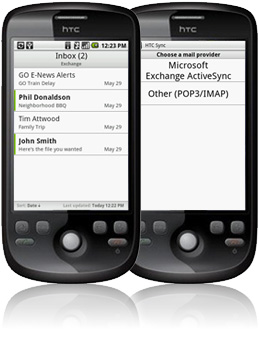This little tidbit was something I wrote before we merged into One to One interactive. One thing I noticed while readings this is that mobile phones are getting more savvy in interpreting HTML email (e.g. Iphone), but this is still not standard.
Catering to the Mobile User
Today, the term cell phone is now only a feature of your mobile device. Mobile devices can be used for taking pictures, video-taping, playing video games, and “oh yeah” communication. I use my phone 80% of the time to read text messages, tweets, and email. The other 20% is used for talking.
And no matter where I am – at lunch, in a store, or even a quick glance at a stoplight – I have access to my email. So with a medium that is consistently with your contacts, how are you optimizing your emails to be read for the mobile audience?
1. Use the Power of the MIME
The content that gets delivered to mobile users should be customized to fit within this smaller medium. To do this, you should have the ability to send both an HTML and plain-text version of your email. This is known as multi-part MIME or Multi-purpose Internet Mail Extensions, which lets the email client decide what version of the email to render. This gives your customers the ability to view the text email on their phone and the same email in HTML on their computer.
 A large majority of mobile devices will render emails in text. Likewise the majority of your subscribers will receive the HTML-rendered email at their computer. So the text version of your email can be targeted with the mobile audience in mind. The overall general message of the text version shouldn’t change, but the content should be more direct (See Point 2.).
A large majority of mobile devices will render emails in text. Likewise the majority of your subscribers will receive the HTML-rendered email at their computer. So the text version of your email can be targeted with the mobile audience in mind. The overall general message of the text version shouldn’t change, but the content should be more direct (See Point 2.).
Also, it is always within email marketing best practices to send both HTML and Plain Text versions in your email campaigns. So when you send both versions in a multi-part MIME version – you will less likely be tagged as a spammer, and your deliverability will likely increase.
2. Be interesting. Be brief.
With mobile screens you obviously deal with smaller real-estate, so make sure your message is to the point within both your content and subject line. Keep in mind the message you send risks being cut off, so if your customer is asked to download the rest of the message, it is not likely to happen. So make sure the meat of your content is in your first few lines.
Try avoiding long sentences and long paragraphs, so you don’t force more scrolling than necessary – this can be a source of frustration for some readers. Long URLs are also an annoyance, so you may want to remove tracking URLs from your message.
You can also use some of the services that are directed towards mobile users. There are plenty of Twitter services that allow you to publish video (twitvid.com) and photos (twitpic.com), which will provide you with links to those media to use in your message.
Scared? You shouldn’t be. Emails are generally more about the content than the design.
3. Rethink the end goal
When you are marketing towards the mobile user, what action do you want the user to take? Sure, we’d like them to purchase our product or read our compelling newsletter right there, but let’s be realistic – this isn’t easy to do with a phone. Rather, we want to tease the user in hopes that they return to their computer where they can read and interact with our email.
A similar thing happened to me right before I started writing this article. I received a tweet that introduced a great gallery of mobile sites with a link attached. I left this message in my phone unread, so I could return later when I had my laptop to look at the site with ease.
People love to be teased with content, so keep your text version short, and give your mobile users a reason to save it for later.
4. In the beginning, there was…
As with any email, make sure that the first lines of your text are compelling. This is especially true in the mobile world. You only have a few lines of text to get your point across, so save the best for the beginning.
Your contacts may only read the first sentence and decide to delete or keep it. I recommend not wasting your first line on trying to get them to visit the HTML email. You need to grasp a person’s attention right away, so if they sense little value in the email, then it’s quickly on its way to the trash.
Make your first sentence genuine and direct. And, avoid using links or imagery at the beginning of the message. Save that content after you get your point across.
5. Continue best practices
Keep to your best practices. Make sure your content matches your subject. Don’t mislead your subscribers. And continue to send at your normal frequency. The mobile side is not anything to be afraid of; it’s simply a different medium that many people use on a daily basis. A mobile marketing plan should compliment what you are already doing.
Sources:
- http://www.emailstatcenter.com/Creative.html
- http://www.dmnews.com/Mobile-e-mail-marketing-musts-for-2008/article/107033/
- http://www.imediaconnection.com/content/20523.asp
- http://blog.simplycast.com/2009/07/08/think-mobile-when-email-marketing/
